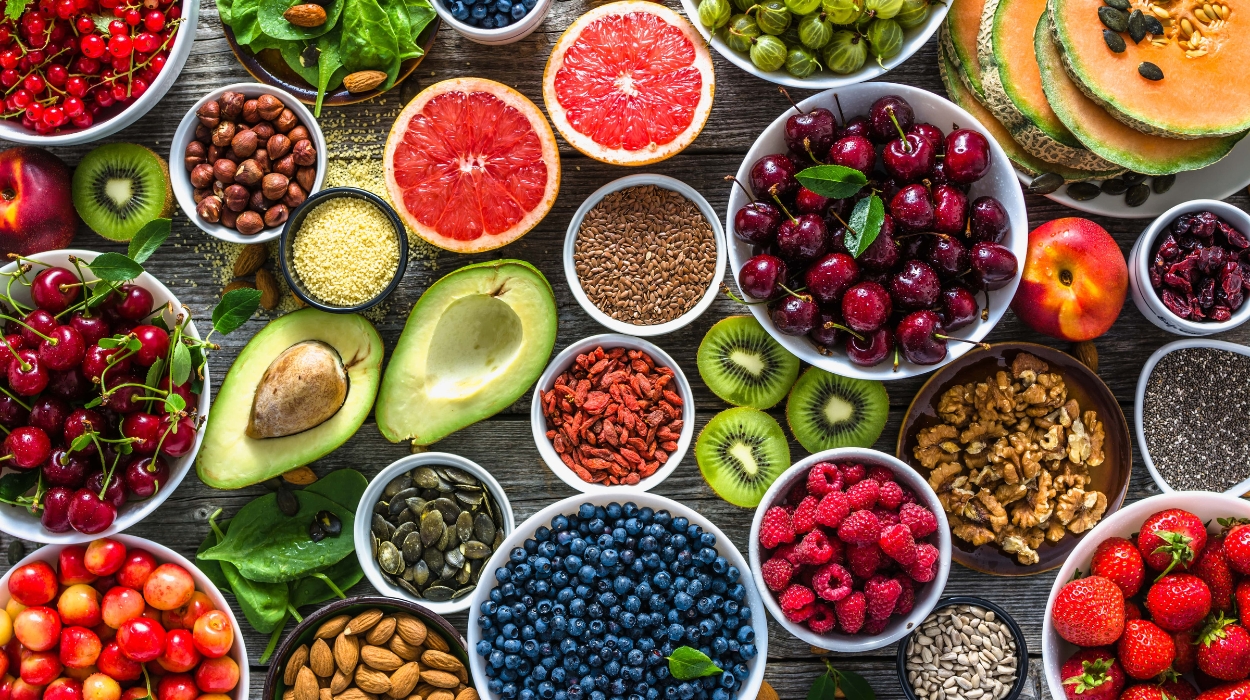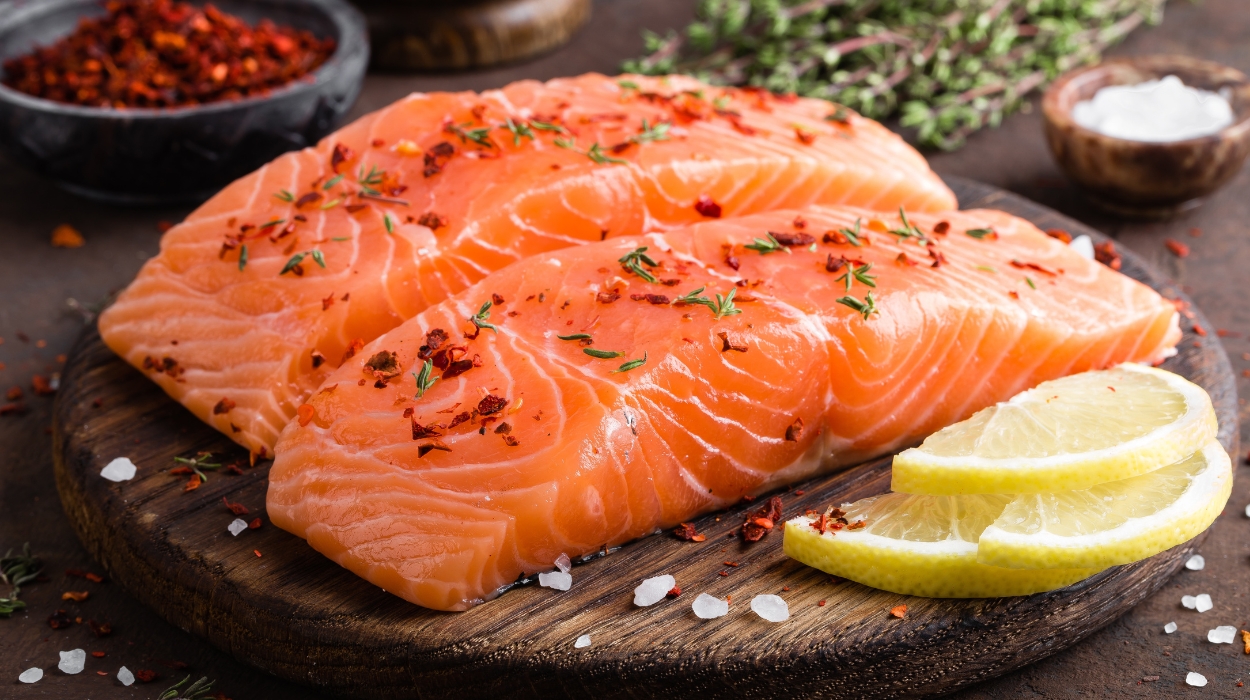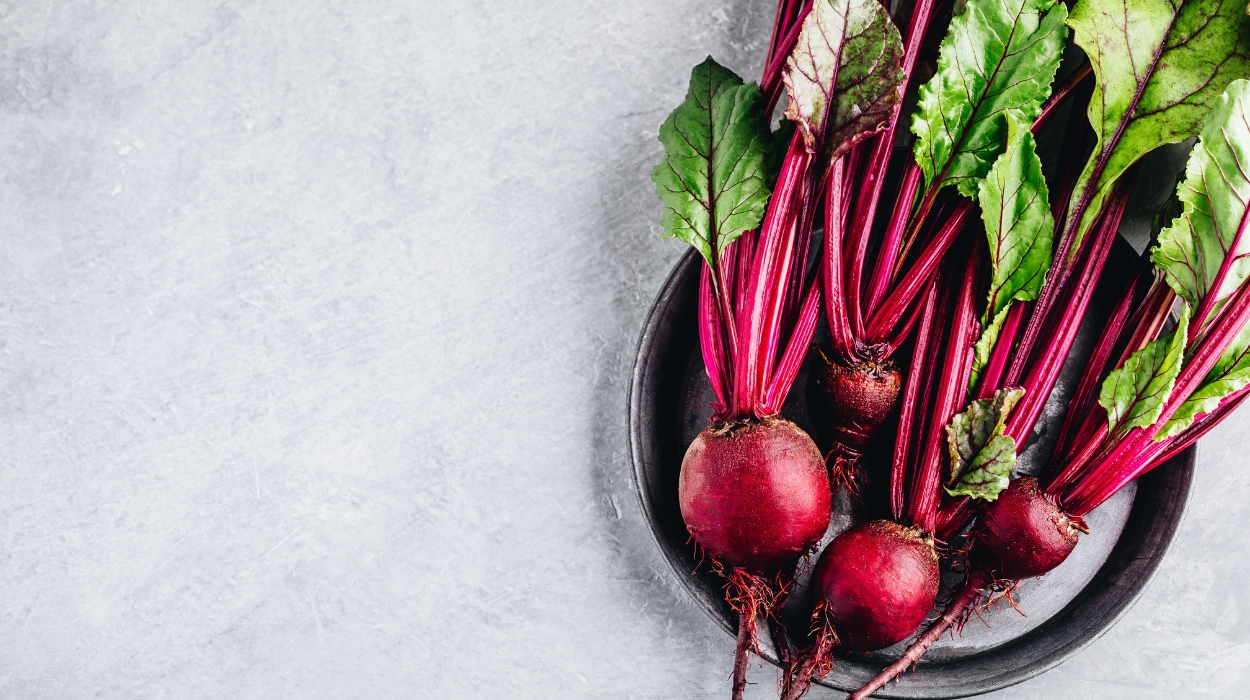 Expert's opinion
Expert's opinion
Expert's opinion
The article is a subjective view on this topic written by writers specializing in medical writing.
It may reflect on a personal journey surrounding struggles with an illness or medical condition, involve product comparisons, diet considerations, or other health-related opinions.
Although the view is entirely that of the writer, it is based on academic experiences and scientific research they have conducted; it is fact-checked by a team of degreed medical experts, and validated by sources attached to the article.
The numbers in parenthesis (1,2,3) will take you to clickable links to related scientific papers.
Superfoods For Weight Loss: Top 10 To Include In Your Diet 2024

To be considered a superfood, that food needs to possess certain characteristics. For example, they need to have a robust nutritional profile or perceived health benefits. Incorporating superfoods into your diet will ensure you consume a wider variety of nutrients.
It may not be surprising that we can also consume superfoods for weight loss benefits. But what are the best foods for weight loss that are superfoods? Overall It’s best to include a variety of supreme superfoods to help you achieve your weight loss goals.
10 Best Weight Loss-Friendly Superfoods
- Fermented foods
- Avocados
- Walnuts
- Salmon
- Sweet potatoes
- Flax seeds
- Goji berries
- Beetroot
- Spinach
- Red kidney beans
10 Best Superfoods For Weight Loss
Fermented Foods
Fermented foods like kefir, yogurt, kombucha, sauerkraut, tempeh, kimchi, and nato contain live cultures that support a healthy digestive tract. More studies[1] find the association between an unhealthy gut microbiome and obesity. With this, science is slowly learning how a healthy gut will help with weight management.
Achieving a more diverse microbiome may help support a healthy weight.
Feeding the gut with probiotic foods may help prevent weight gain. You can also choose fermented foods that contain protein like tempeh and yogurt, or fiber-like kimchi and nato. All of these options will keep you full longer.
You can eat them as a side dish, as a topping, as a tasty drink, or as a nice dessert.
Avocados
This fruit is a rich source of monounsaturated fats along with fiber. This magic combo will help with satiety and keep you full longer, supporting weight loss efforts.
Avocados[2] also contain potent antioxidants like folate, niacin, lutein, and vitamin E. If consumed as part of a lower-calorie plan to lose weight, this superfood may also help decrease triglyceride levels.
Go beyond the guacamole. Use avocado in rice bowls, cube it and mix it into a salad, blend it into your smoothies, or eat it as a side dish. You can also eat it on its own or as a butter alternative.
Walnuts
Nuts in general are a good addition to a healthy diet. Walnuts[3] pack a good nutrient profile with antioxidants vitamin E and B6. This nut has polyunsaturated fats and omega-3 fatty acids, which can improve your lipid profile and protect you from cardiovascular disease.
Even though walnuts are a source of healthy fats and can promote weight loss, it’s important to watch your portions, as the calorie intake can add up pretty quickly.
You can easily incorporate walnuts as part of a low-calorie diet. Eat a handful as a snack, toss them on your salads, or as a topping to your yogurt. You can also include it as part of your homemade granola.
Salmon

This fatty fish is a great source of omega-3 fats which can have some heart-protective effects. A literary review[4] posed that omega-3 may also help prevent weight gain by decreasing the level of leptin in the blood of obese individuals. Leptin is the hormone that triggers hunger.
Eating salmon may also reduce inflammation. The American Heart Association recommends the consumption of fatty fish twice a week[5] for cardiovascular protection. Consider including it in your regular meal rotation to maintain satiety from its protein and healthy fat content.
Enjoy this flavorful fish grilled, baked, on its own, or accompanied with a good salad. You can also try walnut-crusted salmon or salmon roast with vegetables.
Sweet Potatoes
One cup of sweet potatoes is rich in the antioxidant beta-carotene and can be a part of your weight loss diet. Beta-carotene is a precursor for Vitamin A, which is important for visual health. They also are an excellent source of vitamin C, B6, magnesium, and potassium.
Sweet potatoes have quite a bit of fiber content (an astonishing 8 grams in 1 cup), which is useful for satiety and maintaining your gut health. With a lower glycemic index than regular potatoes, boiled sweet potatoes will help with blood sugar control. A great item to include for losing weight, as long as you don’t overeat.
You can eat this as a main dish, cut it up into cubes, and add it to your salads or wraps. Roast them, bake them, or simply boil them.
Flax Seeds
Flax seeds are beneficial to balance blood sugar,[6] and insulin resistance, promoting a healthy body mass index (BMI),[7] and helping manage high blood pressure. It is also a source of dietary fiber, both insoluble and soluble fiber, which is associated[8] with improved bowel regularity and helps decrease cholesterol levels.
These seeds also are a source of magnesium, omega-3 fats, and thiamine (vitamin B1). Consume 1 or 2 tablespoons per day of whole or ground flax seeds for the biggest benefits.
Include them as a source of the healthy fat alpha-linoleic acid in your salads, yogurt, or oatmeal. You can also add them to your water, smoothies, and your favorite baked goods.
Goji Berries
This fruit is packed with Vitamin A and zeaxanthin, which aids in protecting the eyes from damage. Goji berries are a naturally low-calorie food, containing only 98 calories[9] in 5 tablespoons.
The plant for goji berries is used for diabetes treatment in Chinese traditional medicine. A 2011 study[10] involving goji juice showed a decrease in waist circumference and increased energy expenditure in participants who consumed it. While the study sample was small, it opened the door for further research.
Include goji berries in your yogurt, salads, and smoothies, or add them to a small berry fruit salad. Try them with your green tea or make tea from goji berries.
Beetroot

This powerful root vegetable contains a nutrient called betaine, which may aid weight loss. Betaine supplementation has the potential to decrease body fat in humans, since it helps the liver process fats, according to a 2019 review.[11]
Beets also contain nitrates[12] that enhance blood flow and nutrient delivery in the body. In the end, this might be helpful to improve physical activity endurance and performance, which can enhance weight loss.
Grate beetroot over your salad or make soup with this vegetable. Pair up roasted with a quinoa salad. You can also go simple and boil it to pair up with a good protein.
Spinach
Spinach is part of the leafy greens[13] family, along with kale, Swiss chard, collard greens, romaine, and bibb lettuce. Spinach is high in insoluble fiber which promotes regularity and fills you up, supporting weight control.
You can consume spinach on its own, in a salad with other leafy greens, as part of a smoothie, or with your favorite dish. Remember that they cook down and shrink in the pan. Serve with other vegetables and a lean protein to fill up.
Red Kidney Beans
This bean[14] has filling fiber and resistant starch that will help you eat less. It can also help regulate your blood sugar levels. Half a cup of red beans has around 5 grams of protein and all essential amino acids.
Red kidney beans are also a source of antioxidants and minerals like iron, potassium, and zinc. This makes beans a good staple to include in your diet since they are associated with weight loss.
This bean is also versatile. Make a bean salad or toss them onto a green salad. Make a soup, include them in a chili, into a rice and beans dish, or in a wrap.
While we couldn’t include every possible superfood on this list, consider including the following in your diet as well when possible.
Spice your foods with turmeric to help receive some anti-inflammatory effects.
Add cinnamon[15] to your desserts, smoothies, or fruits, which may help with blood glucose management.
And finally, quinoa, the whole grain rich in essential amino acids and fiber serves well as a warm dish or a cold salad.
What Is A Superfood?
A superfood is a term used for foods with a high nutrient density that is claimed to provide health benefits. For example, berries rich in antioxidants may be protective against cancer risk, and fatty fish like salmon are a good source of inflammation-fighting omega-3 fatty acids.
These superfoods can sometimes be exotic foods to North Americans, like goji berries. But there are some more common foods like spinach and nuts which don’t necessarily have the spotlight on them but can also be classified as superfoods.
The health benefits of eating superfoods are:
- Possible prevention against cancer
- Antioxidant potential
- Improved blood sugar control
- Protects the heart
- Boosts the immune system
To reap all the benefits from superfoods, include them as part of a balanced diet and healthy lifestyle. This will help you get more bang for your buck on getting maximum nutrition. Another positive of including new superfoods is that they will bring variety to your diet. If you are an adventurous eater, you can try new recipes or visit new restaurants.
Some people may find that superfood powders might be a simpler option to obtain specific nutrients. Some of these supplements might also be able to assist in weight management by improving recovery post-workout.
You might be wondering which are the best superfoods for weight loss. This list is quite long.
Many foods can get the title of a superfood, because of their high nutrient density and bioactive components, which may have some effect on your weight. You can include more weight-loss superfoods to naturally help you eat less, improve your gut health, and support your energy and physical activity efforts.
When trying to lose weight, the best approach is balance.
First, get your diet on track by including:
- Healthy starches like oatmeal, brown rice, whole grain pasta, potatoes with skin, and beans, among others.
- Fruits, specifically fresh or frozen fruits.
- Vegetables both fresh and frozen are best. Eat this at every meal.
- Lean proteins like poultry, eggs, beef, fish, and pork.
- Low-fat milk, yogurt, cottage cheese, cream cheese.
Make sure to complete 60 minutes of moderate to vigorous physical activity[16] on most days of the week for gradual weight loss. All in all, balancing a healthy diet with movement is an effective method to assist you in preventing or managing metabolic syndrome.
Summary
A healthy varied diet is vital to obtain a variety of important nutrients, keep you full, and support your weight loss journey. What is the best food for weight loss? All of these on this list are wonderful options to support your goals.
In addition to consuming weight-loss superfoods regularly, include a variety of whole grains, lean proteins, low-fat dairy, fruits, and vegetables. Balance how much you eat with some physical activity for optimal body fat-burning results.
Including superfoods will make sure you are getting different nutrients to help lower body weight. These healthy foods also offer additional benefits than just weight loss alone – they also have antioxidant properties that support overall health.
Enjoy a variety of supreme superfoods to prevent boredom and enjoy the process of losing weight along the way.
+ 16 sources
Health Canal avoids using tertiary references. We have strict sourcing guidelines and rely on peer-reviewed studies, academic researches from medical associations and institutions. To ensure the accuracy of articles in Health Canal, you can read more about the editorial process here
- Asadi, A., Negar Shadab Mehr, Mohamad Hosein Mohamadi, Fazlollah Shokri, Mohsen Heidary, Nourkhoda Sadeghifard and Saeed Khoshnood (2022). Obesity and gut–microbiota–brain axis: A narrative review. Journal of Clinical Laboratory Analysis, [online] 36(5). doi:https://doi.org/10.1002/jcla.24420.
- Dreher, M.L. and Davenport, A.J. (2013). Hass Avocado Composition and Potential Health Effects. Critical Reviews in Food Science and Nutrition, [online] 53(7), pp.738–750. doi:https://doi.org/10.1080/10408398.2011.556759.
- Hayes, D., Angove, M.J., Tucci, J. and Dennis, C. (2015). Walnuts (Juglans regia) Chemical Composition and Research in Human Health. Critical Reviews in Food Science and Nutrition, [online] 56(8), pp.1231–1241. doi:https://doi.org/10.1080/10408398.2012.760516.
- Gray, B., Steyn, F.J., Peter and Vitetta, L. (2013). Omega-3 fatty acids: a review of the effects on adiponectin and leptin and potential implications for obesity management. European Journal of Clinical Nutrition, [online] 67(12), pp.1234–1242. doi:https://doi.org/10.1038/ejcn.2013.197.
- Jain (2015). Omega-3 fatty acids and cardiovascular disease. European review for medical and pharmacological sciences, [online] 19(3). Available at: https://pubmed.ncbi.nlm.nih.gov/25720716/.
- Mohsen Mohammadi-Sartang, Sohrabi, Z., Reza Barati-Boldaji, Hamidreza Raeisi-Dehkordi and Mazloom, Z. (2017). Flaxseed supplementation on glucose control and insulin sensitivity: a systematic review and meta-analysis of 25 randomized, placebo-controlled trials. Nutrition Reviews, [online] 76(2), pp.125–139. doi:https://doi.org/10.1093/nutrit/nux052.
- Tahereh Toulabi, Masomeh Yarahmadi, Goudarzi, F., Farzad Ebrahimzadeh, Amir Momenizadeh and Sajad Yarahmadi (2022). Effects of flaxseed on blood pressure, body mass index, and total cholesterol in hypertensive patients: A randomized clinical trial. Explore-the Journal of Science and Healing, [online] 18(4), pp.438–445. doi:https://doi.org/10.1016/j.explore.2021.05.003.
- Corina-Bianca Ioniţă-Mîndrican, Khaled Ziani, Mititelu, M., Oprea, E., Sorinel Marius Neacșu, Morosan, E., Dumitrescu, D.-E., Adrian Cosmin Roșca, Doina Drăgănescu and Negrei, C. (2022). Therapeutic Benefits and Dietary Restrictions of Fiber Intake: A State of the Art Review. Nutrients, [online] 14(13), pp.2641–2641. doi:https://doi.org/10.3390/nu14132641.
- Usda.gov. (2023). FoodData Central. [online] Available at: https://fdc.nal.usda.gov/fdc-app.html#/food-details/173032/nutrients.
- Harunobu Amagase and Nance, D.M. (2011). Lycium barbarum Increases Caloric Expenditure and Decreases Waist Circumference in Healthy Overweight Men and Women: Pilot Study. Journal of The American College of Nutrition, [online] 30(5), pp.304–309. doi:https://doi.org/10.1080/07315724.2011.10719973.
- Gao, X., Zhang, H., Guo, X., Li, D., Li, S. and Li, D. (2019). Effect of Betaine on Reducing Body Fat—A Systematic Review and Meta-Analysis of Randomized Controlled Trials. Nutrients, [online] 11(10), pp.2480–2480. doi:https://doi.org/10.3390/nu11102480.
- Clements, W.T., Lee, S.-R. and Bloomer, R.J. (2014). Nitrate Ingestion: A Review of the Health and Physical Performance Effects. Nutrients, [online] 6(11), pp.5224–5264. doi:https://doi.org/10.3390/nu6115224.
- Usda.gov. (2013). Dark Green Leafy Vegetables : USDA ARS. [online] Available at: https://www.ars.usda.gov/plains-area/gfnd/gfhnrc/docs/news-2013/dark-green-leafy-vegetables.
- Rebello, C.J., Greenway, F.L. and Finley, J.W. (2014). A review of the nutritional value of legumes and their effects on obesity and its related co-morbidities. Obesity Reviews, [online] 15(5), pp.392–407. doi:https://doi.org/10.1111/obr.12144.
- Davis, P.A. and Yokoyama, W. (2011). Cinnamon Intake Lowers Fasting Blood Glucose: Meta-Analysis. Journal of Medicinal Food, [online] 14(9), pp.884–889. doi:https://doi.org/10.1089/jmf.2010.0180.
- Physical Activity Guidelines for Americans Summary. (n.d.). Available at: https://health.gov/sites/default/files/2019-10/PAG_ExecutiveSummary.pdf.



